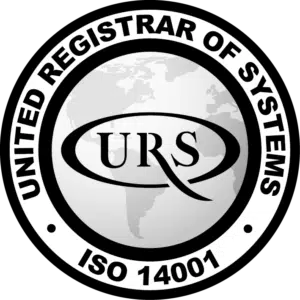The Evolution of School Dinners over the Years
Jul 23, 2024 • 7 minutes

The school dinner bell is a welcome sound for many children as it marks a break from class and a chance to refuel for the afternoon. From a simple source of nourishment to a platform for enhancing young health and well-being, these meals have expanded beyond their basic function over time. This past shows changing cultural priorities and developments in knowledge about nutrition. From its modest beginnings in the early twentieth century to the present, the history of school lunches in Britain is extraordinary. It stands out for watershed events, conflicts, and a continuous dedication to feed young people wholesome and enjoyable food.
Early Days of School Dinners (1900s – 1920s)
Early in the 20th century, Britain first developed the idea of school lunches. Driven from a need to solve not just hunger but also education. School meals back then were sometimes basic breakfasts with few choices like porridge or toast with dripping. This concentration on fundamental survival mirrored the social and financial reality of the day.
More sophisticated choices including classic British cuisine like stews, sweets and treacle pudding emerged in the 1920s and 1930s. This change suggested a rising awareness of the need of giving pupils a more balanced and fun dinner experience.
Wartime and its Impact (1940s)
The outbreak of War II brought about significant changes to the lives of British people, including the way they accessed and consumed food. As the country mobilised for war, the government implemented a comprehensive rationing system to ensure the fair distribution of scarce resources. This system had a profound impact on the meals served in schools across Britain, as the availability and variety of ingredients were severely limited. Staple foods such as meat, dairy products, and even vegetables were strictly rationed, limiting the options for school catering staff.
The main meal of the school dinner was often a stew or casserole, made with rationed meat or a meat substitute. Bread was an essential part of the school meal, as it provided a source of carbohydrates and helped to fill up the students. Water and milk were the primary beverages offered. Milk was deemed an important source of calcium and other essential nutrients for growing children.
Post-War Boom and Changing Tastes (1950s – 1960s)
Britain was blessed with fresh cash from the postwar economic comeback. The way school dinners evolved revealed this. New choices like corned beef and the always popular fish and chips signalled a move towards more varied and appealing cuisine. Often presented with a dash of jam, iconic treats like rice pudding and spotted dick became staples, offering a little of sweetener around noon.
Free school meals for low-income groups also became more common at this time. This legislative action acknowledged the need of giving every kid, from all social levels, enough food. By giving access to healthy meals, schools significantly helped to improve the health of a growing student population.
The Thatcher Era and the Rise of Convenience (1980s)
Convenience and controversy defined Margaret Thatcher’s Conservative government’s new era of school meals in the 1980s. Competitive tendering—in which private businesses fought to provide school meals at the lowest feasible cost—was one obvious change. While this change aimed to cut government expenditure, it also lowered nutritional requirements.
Low-cost ingredients and processed foods include custard-filled sweets, chocolate cake, and potato grins—which lowered costs—were given top priority. This move away from fresh, healthy meals has spurred concerns about the long-term impact on children’s health. Many parents prefer packed lunches in response, which helps to lower the use of school canteens. This evolution mirrored the growing worry over the quality of food provided within educational institutions.
Health Concerns and Jamie’s School Dinners (2005s)
Public interest in childhood obesity and poor school meals peaked in the 1990s. Manufactured, sausage-shaped mystery meat, Turkey Twizzlers, became symptomatic of the collapse in nutritional standards as junk food substitutes. A general trend towards a better lifestyle and growing awareness of the link between nutrition and well-being helped to intensify these fears.
Now let me introduce eminent chef Jamie Oliver. In his 2005 documentary series “Jamie’s School Dinners,” he revealed how little nutrients many British school lunches contain. Usually serving few vegetables or fruit, the series highlighted processed meals high in saturated fat, salt, and sugar. Oliver’s passionate campaign for improved school meals connected with the public and sparked a national discussion on how school dinners may help to improve children’s health.
The public indignation spurred a boom of support for redesigning school food. Oliver’s campaign combined with growing public pressure helped to reduce processed goods like Turkey Twizzlers. Apart from salads, institutions started providing better choices including fish curries, bean wraps, and healthful pasta dishes. This action marks a turning point in the campaign for improved British school food.
The 2010s: Regulations and the Focus on Nutrition
Stronger limitations on school meals in the United Kingdom were clearly trending in the 2010s. These limitations aimed to provide students a more balanced and better food surroundings. One major change is defining minimum fruit and vegetable requirements for every meal. Moreover, the restricted frequency of deep-fried foods underlined the need for better options.
School dinners now use more technology as well this decade. Pre-ordering systems let children select their meals ahead of time. This creativity not only streamlined the lunch process but also guaranteed youngsters got their preferred choices and shortened wait times.
The variety of healthy and mouth watering options presented in school meals nowadays reflects these positive changes. Students now have more appealing and nutritious choices like mac and cheese and chocolate beetroot brownies as well as tuna pasta bake and veggie nuggets. Still on menus, though, several classic British dishes such fish and chips, jam roly-poly, and jacket potatoes evoke nostalgia in addition to their health consciousness. This mix of conventional favourites and healthy substitutes shows the ongoing dedication to provide young people with good and appealing food.
The 2020s and Beyond: Emerging Trends in School Dinners
The development of school dinners will continue into the 2020s, impacted by technological improvements, a better knowledge of nutritional needs, and an emphasis on sustainability and well-being. Here are some major trends influencing the future of school lunches:
1. Technological Advancements: Pre-ordering, Online Menus, and Dietary Management
Technology is influencing school meals. Pre-ordering software lets students choose their lunches ahead of time, speeding up the process. Student and parent-accessible online menus allow filtering by dietary needs. Technology may also assist youngsters with allergies or intolerances to obtain safe and healthy meals.
2. Expanding Dietary Options: Catering to Allergies, Intolerances, and Cultural Preferences
School meals are getting more diverse and nutritious. This offers safe and tasty lunch options for kids with allergies and intolerances. Schools increasingly serve ethnically diverse meals to reflect their pupils’ cultures.
3. Sustainability and Locally Sourced Ingredients
School canteens are embracing sustainability. Schools are seeking ways to reduce their environmental impact, such as using local goods, decreasing food waste, and using eco-friendly packaging. This technique helps the environment and teaches students about food origins.
4. Focus on Food Education and Building Healthy Habits
School lunches are now a chance to teach pupils about healthy eating. Schools may offer food education courses or include nutrition and good eating into meals. Students may make healthy food choices outside the cafeteria thanks to this well-being focus.
A Future Focused on Well-being
School meals in Britain show a remarkable interaction among social, economic, and cultural changes. From modest beginnings in the early 1900s to the emphasis on well-being in the 2020s, school meals have regularly changed to fit the demands of young students. The constant objective is to give children wholesome and fun meals that support their development and growth, even when the argument between giving comfortable classics and giving health first priority keeps on.
School dinners seem to be increasingly more creative and inclusive as technology develops and our knowledge of nutrition grows. The focus on student well-being should be expected to remain ongoing, maybe with even more tailored methods to guarantee every child gets the greatest possible nutrition for their academic and personal path. A wholesome school dinner is ultimately about laying the groundwork for a healthy and contented life, not only about the food on the plate.
Contact Westcountry Group today
As the future of school meals embraces well-being and inclusivity, Versa Design offers innovative and adaptable canteen furniture solutions to create a comfortable and efficient dining experience for every student.
Whether you are looking to upgrade your current dining furniture or looking for something new, we have delivered a number of multipurpose and dining hall projects that meet the needs of our education environments. Here’s what our customers had to say: https://www.versadesign.co.uk/projects.
Contact us today to find out more – call 0330 030 0330, email: ideas@versadesign.co.uk, or visit https://www.versadesign.co.uk.






